| |
"You accomplish more with a smile, a handshake, and a gun than you do with just a smile and a handshake." |
| |
Al Capone |
Try as I might, I can't think of a gangster who remains as internationally famous – or perhaps that should be notorious – as Alphonse Gabriel Capone. He's certainly made more film appearances than any of his contemporaries, albeit not always under his own name. There's little doubt, for example, that Capone was the inspiration title character of Howard Hawks' 1932 Scarface, a nickname that Capone loathed but found himself saddled with in his youth after having his face slashed by Frank Gallucio whilst working as a nightclub doorman. Precious few of the actors who played him bore a strong physical resemblance to the real Capone, whose rotund frame and rounded features did not exactly conform to the movie hard man stereotype. Robert De Niro pretty much nailed it in Brian De Palma's The Untouchables, and Rod Steiger came surprisingly close in Richard Wilson's 1959 Al Capone, but my personal favourite has to be Stephen Graham's fiery portrayal in the rightly celebrated HBO series, Boardwalk Empire.
It's perhaps a little ironic that Capone's most notorious criminal act was one that he has never been conclusively proven to have been behind, despite the widely held conviction that he was. And there's a peculiar allure to the given name for this craven act of multiple murder, one that jarringly weds a day dedicated to romance and lovers to a word with nothing but terrible connotations. Yet despite the fact that just about everyone has heard of the Saint Valentine's Day Massacre, the only thing that most seem to know about it was that it involved a massacre that took place on Saint Valentine's Day. If that includes you and you're looking to learn more, then you could do a lot worse than check out Roger Corman's 1967 unambiguously titled gangster movie, The St. Valentine's Day Massacre, which contrary what you might expect from a man once dubbed 'King of the Bs', is for the most part remarkably faithful to actual events.
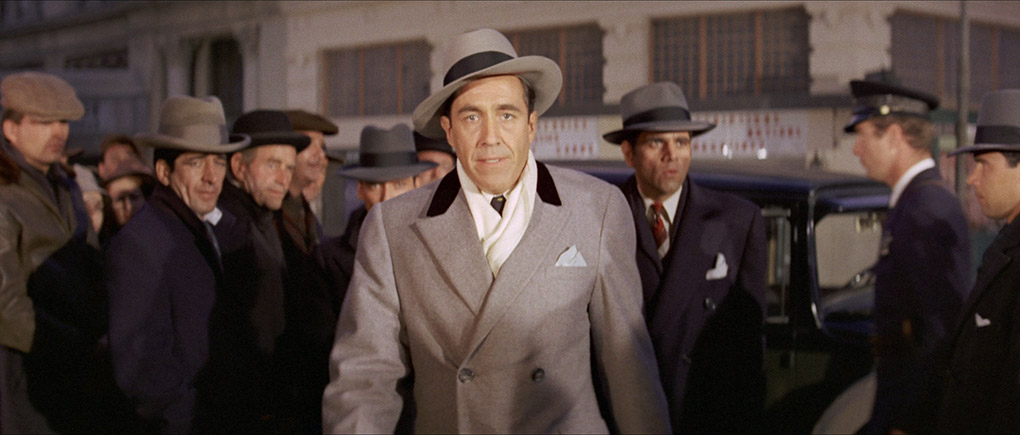
This semi-documentary approach is signposted at an early stage by an uncredited Paul Frees' almost newsreel-like narration, as he introduces the key players and provides brief biographical details on each, much of which was the result of extensive research on the part of Corman and screenwriter and former crime reporter Howard Brown. And if you do your own research, you might be surprised at the attention to factual detail on display here, from the specifics of key encounters to accurately quoted dialogue and even gangster Peter Gusenberg's mispronunciation of Capone's surname*. The known facts about the massacre itself and its immediate build-up have also been accurately restaged, right down to the misidentification of Moran by Capone's men and even the position of the bodies of the victims as they fell to the floor. The only major deviation from the known facts is the manner and chronology of Sicilian mobster Joe Aiello's death, an invention of the filmmakers that we can presume was devised to provide Capone with an act of personal vengeance for the sake of the drama, one that allows Corman to suggest an act of violence that he would have been unable to show in 1967, but whose implication is still clear and commendably nasty.
The casting is impressive, though not without one notable retrospective disappointment. That Jason Robards looks nothing like Al Capone probably matters little when he so effectively captures the gangster's volatility and ability to strike fear into those who are foolish enough cross him, but the news that Robards was originally cast as Capone's principal rival, Bugs Moran, and that Corman actually wanted Orson Welles to play Capone** does leave you pining a little for the film that might have been. That said, Ralph Meeker makes for a solidly authoritative Moran (but Corman is right, Robards would have been even better), and the supporting roles are all impressively cast and performed. The real surprise is George Segal's turn as Moran henchman Peter Gusenberg, a cheerfully sadistic role for an actor known primarily for his sympathetic lead performances in a string of 1970s film comedies and dramas. There are also some cult treats at the lower end of the cast, with small but crucial roles for Joe Turkel, a young Bruce Dern and Corman favourite Dick Miller, and yep, that's a pre-fame Jack Nicholson hoarsely delivering a single line of dialogue as Capone gang member Gino.
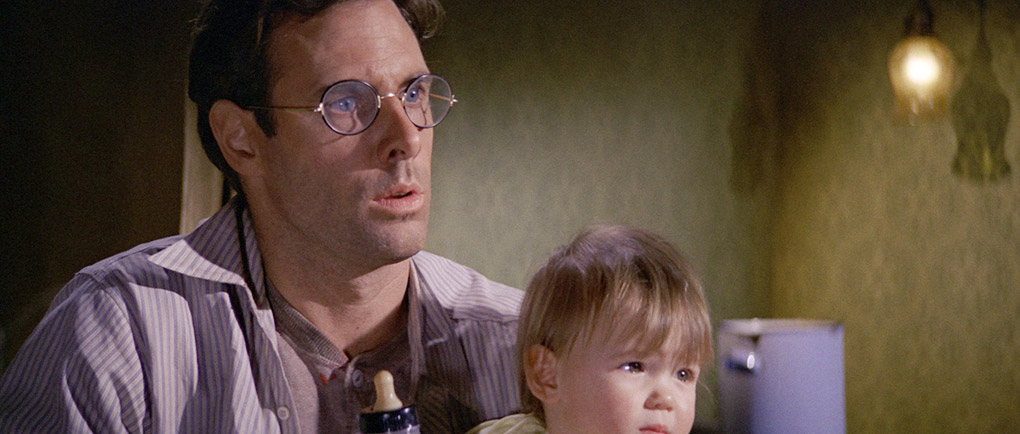
It's the cast, coupled with Browne's solidly structured screenplay and Corman's energy and cinematic economy that prevents The St. Valentine's Day Massacre from ever playing like the docudrama it essentially is. Indeed, such attention to historical detail is particularly impressive for a film whose prime purpose is to excite and entertain, both of which it does with considerable aplomb. If you came for the gunplay then you'll be in pig heaven, as Corman appears to have revelled in the opportunity the studio budget offered him to load entire sets with squibs and then blast them to smithereens with Tommy Gun fire. This peaks in a bravura sequence in a restaurant in which Capone is eating is subjected to a hailstorm of bullets fired from a succession of passing cars manned by men from Moran's North Side Gang. As furniture, fittings and ornaments explode, and Capone and his men are pinned helplessly to the floor, I was irresistibly reminded of a similarly destructive assault on the near deserted Precinct 13 in a film made nine years later by a young John Carpenter, a filmmaker whose ability to work wonders on low budgets would in different circumstances have made him an ideal Roger Corman protégé.
Where this air of authenticity falters a little is in the overly bright manner in which a few of the interiors (and just occasionally, exteriors – the film contains one of the sunniest snowstorms I've ever seen) are lit, with some locations having that universal TV lighting feel, a pragmatic technique in which studio sets were lit not for realism but allow to actors to be filmed from any angle without their faces being cast into serious shadow. Given Corman's reputation for working at speed, this may well have been a deliberate decision, as in all other respects Milton Krasner's scope cinematography serves the film handsomely, and combined with Philip Jefferies and Jack Martin Smith's production design, helps to give the film a production value that belies its relatively low budget.
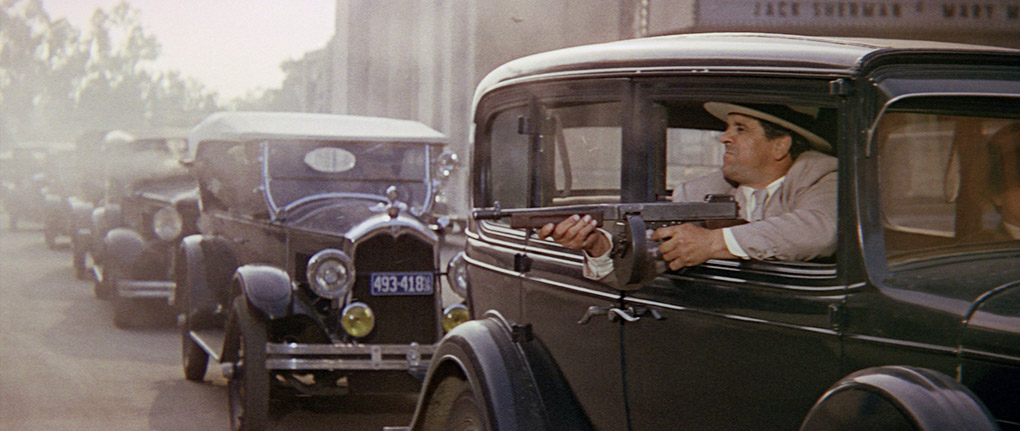
Either way, this is a minor quibble over what remains one of Corman's most enjoyable and impressively mounted works. It was his first directing assignment for a major studio and his biggest budget to date,*** and a rare example of a Corman film that ran for longer than 90 minutes, but in his own way he puts his stamp on every aspect, not least in the forward-thinking proposition that criminal gangs in the 1920s functioned much like the business corporations of today. It's something brought home in the scene in which Capone gathers the key operatives of his organisation and makes the decision to take out his hated rival, a scene that looks for all the world like a corporate board meeting, one in which a group of slickly-dressed male business operatives in positions of nominal power deliver profit reports to their boss whilst sitting the sort of long wooden table you'll find in board rooms across the world. One suspects that if Capone had experienced even an inkling of the profits the corporate gangsters of today would make, the political influence they would have and the ease with which they are able to trample on anyone who stands in their way or questions their legitimacy, he would had turned a particularly sickly shade of green with envy.
Sourced from a 4K remaster by Twentieth Century Fox, the 2.35:1 1080p transfer here is rather lovely to behold. The sharpness really showcases the attention to detail in the costumes and production design, the pitch-perfect contrast ensures the consistently vibrant image never dilutes its black levels, and the colour is handsomely reproduced, with the primes really popping when they do appear. The colour does adopt a more sepia hue during one flashback sequence, but this was clearly deliberate (it returns to normal the second the scene ends), though oddly is not employed on an earlier flashback. If there's a dust spot or even a trace of damage repair anywhere, I must have missed it.
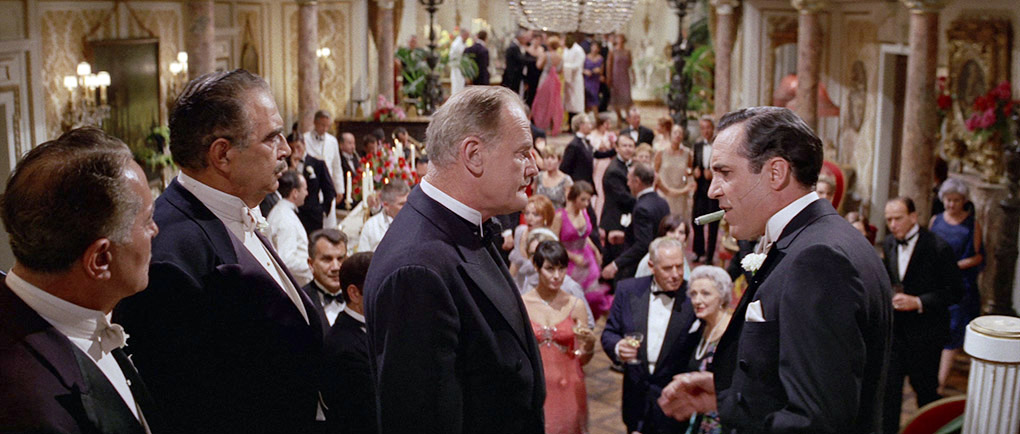
The Linear PCM 1.0 mono soundtrack belies the film's age, delivering clear dialogue and sound effects (there are plenty of loud gunshots to evidence this) and boasting a better dynamic range than you'll find on a good many films of this period. Lionel Newman's lively, 20s-influence score sounds fine throughout, and there's no trace of background hiss or damage.
Optional English subtitles for the hearing impaired are available.
Roger Corman Remembers (3:31)
Corman recalls the making of a film that was simultaneously the lowest budgeted 20th Century Fox film of that year and the biggest budgeted film he'd ever helmed. He reveals how he recycled sets from other studio features, talks about wanting to cast Orson Welles as Al Capone, the need to nail the massacre itself on the first take, and his determination to accurately capture the detail of the period.
Scenes of the Crimes (13:15)
Barry Forshaw delivers a most engaging appreciation of the film, albeit one that covers almost all of the ground that I did in my review (I rarely watch the extras before writing at least the bulk of a review, so this happens a lot), and a good deal more. Areas covered include Corman's way with economical filmmaking, the film's documentary feel, Paul Frees' narration, the killing of Aiello, and the various film and TV interpretations of Capone.
The Man of a Thousand Voices (11:05)
Ben Ohmart, author of Welcome Foolish Mortals: The Life and Voices of Paul Frees, provides some useful biographical information on a man whose name I wasn't familiar with but who by rights should be as well-known as celebrated voice actor Mel Blanc.
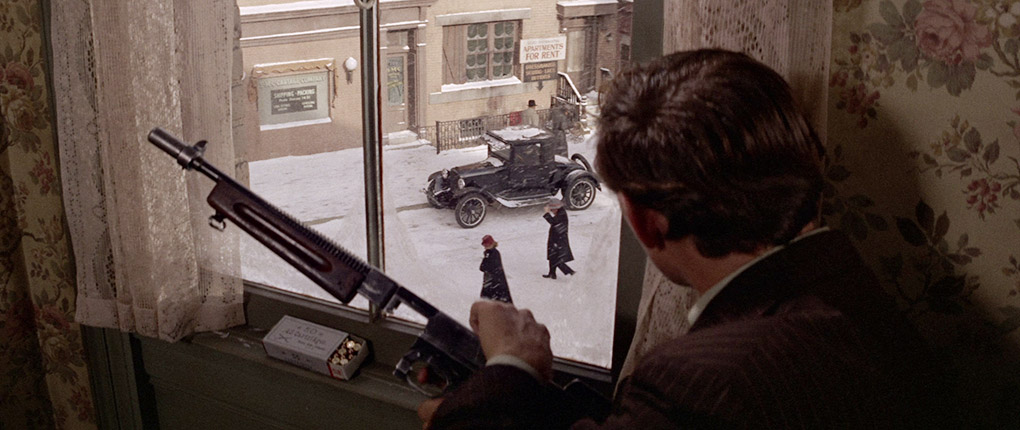
Super 8 Version (7:46)
Once again, Indicator have tracked down the 8mm version of the movie featured on this disc (if you're new to this phenomenon, check out our review of Indicator's release of The New Centurions for more details) and again the principal interest is in seeing how a busy 100 minutes of screen time is compressed into just over 7 (the first 20 seconds consists of a textual introduction). Well, here it's achieved by dispensing with most of the story and stripping it down to Capone ordering the massacre in retaliation for the restaurant attack on him by Moran's boys, which is also considerably shortened here.
Theatrical Trailer (2:32)
A solid enough sell that kicks off with a warning in vivid red lettering, and includes shots of the climactic massacre, but since even the title acknowledges this is coming it hardly counts as a spoiler.
Roger Corman Trailer Commentary (2:58)
Corman introduces the above detailed trailer and shares a few memories about the making of the film. He recalls thinking that having five weeks to shoot the film was somewhat luxurious (he usually shot his films in just 3 weeks or less) and that he used every bad nose in Hollywood to play the gang members.
Image Gallery
56 pages of publicity stills and other promotional material.
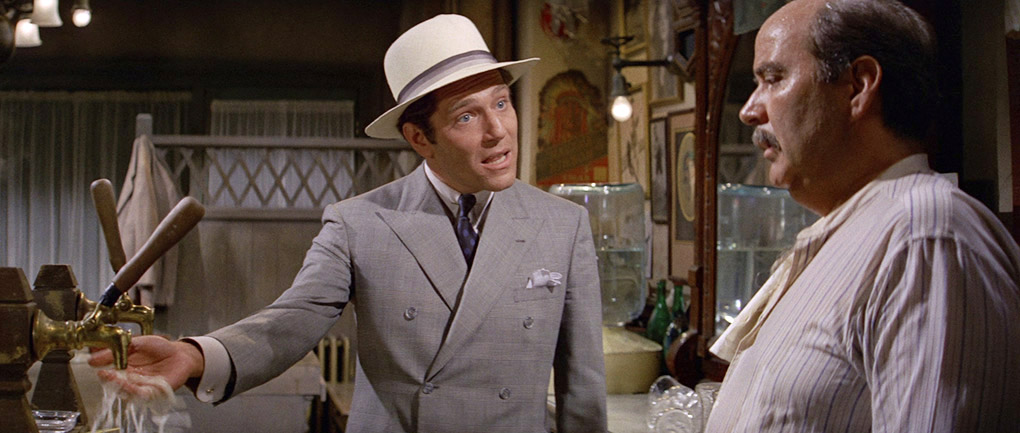
Booklet
Another terrific booklet from Indicator kicks off with a full set of credits for the film, then moves into top gear with an essay on the film by Neil Sinyard titled Gunfire and Fury, a terrific and detailed read that again covers almost all of the points I've made in my review, and somewhat more eloquently. Next up, we have an extract from Corman's 1990 memoir How I Made a Hundred Movies in Hollywood and Never Lost a Dime in which he focuses specifically on The Str. Valentine's Day Massacre and reveals why Jack Nicholson makes such a brief appearance in the film. This is followed by an extract from a 1969 interview with Corman by Joseph Glemis, one that inadvertently highlights a sizeable discrepancy that exists about the film's actual budget – elsewhere in this booklet and on the extra features it is quoted by Corman as being just over $1 million, but here he states that that the film was budgeted at $2.5 million and that he brought it in for $2.1 million, but that he could have brought it in for $1.1 million or $1.2 million had it been made independently, something backed up by a filmed interview I found with Corman online. After this, we have a reproduction of an article by Philip French from a 1967 issue of Sight & Sound that looks at this film and Arthur Penn's Bonnie and Clyde, which was released a few weeks later, both of which were considered controversial in their day for their violent content. Rounding things off is a surprisingly positive review by Tom Milne from Monthly Film Bulletin. Stills and scans of publicity material have also been included.
The release of any Roger Corman film on Blu-ray is a cause for quiet celebration, hence my glee at the news that one of the most enjoyable works from a particularly creative period of his career (it was made after his run of Edgar Allen Poe films and between the censor-baiting duo of The Wild Angels and The Trip) was being released on Blu-ray by Indicator. No surprises that it lives up to expectations, with a lovely HD transfer and some worthwhile special features, the cream of which is the excellent booklet. Enthusiastically recommended.
|